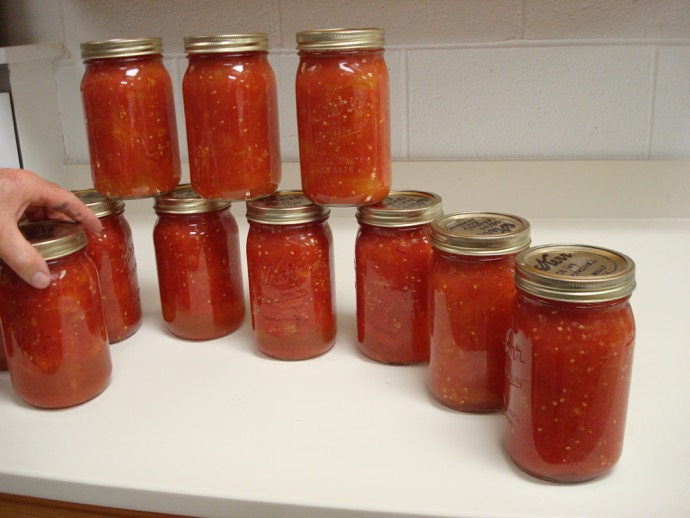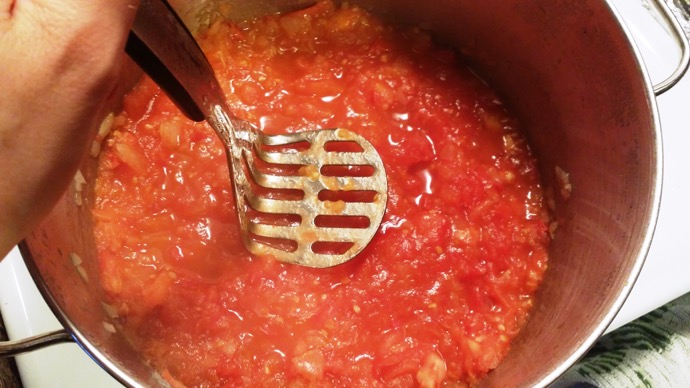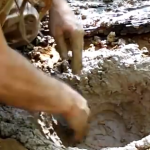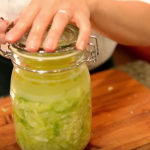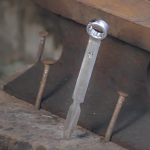Canning Pasta Sauce With and Without Meats
Pasta sauce can be one of the most nutritious foods that you can add to your long-term food storage stockpile. However, it’s important that you process sauces with and without meats differently. Let’s take a look at some considerations, along with a basic recipe, that can give you a stable and healthy finished product.
Pressure Canning Meats
You want to process all meat and vegetable sauces with a pressure canner in order to minimize the growth of microorganisms and bacteria that may form during storage. It’s also important that you follow guidelines to ensure that you are using the right amount of pressure for the altitude that you are canning the products. The good news is that you can still add vegetable ingredients along with seasonings without impacting the stability of the finished products. Here’s a recipe that is optimized for canning meat sauce:
30 lbs of tomatoes
1 cup of chopped onions
1 cup of chopped celery
1 cup of chopped bell peppers
2 ½ lbs of LEAN ground meat of your choice
2 tablespoons of oregano
2 tablespoons of basil
2 tablespoons of parsley
½ cup of brown sugar (optional)
6 cloves or 1 bulb of minced, fresh garlic
4 teaspoons of canning salt
Preparing the Tomatoes

You have three basic options when it comes to preparing tomatoes. You can blanch them, use a food mill or put them in a blender. Blanching is easy. All you need to do is boil the tomatoes, a handful at a time, for about a minute or two, until the skin begins to break. Take the tomatoes out as soon as the skin breaks and immediately place in a pot of cold water to stop the cooking process. Peel the skins once the tomatoes are cool enough to be handled with your hands.
Using a food mill will remove both the seeds and the skin, which makes for a more pasty finished product. Slice a handful of tomatoes in half and place in a large stock pot over medium heat. Mash the tomatoes with a potato masher to extract the juices. Keep adding and mashing the tomatoes until all of them are in the pot. Let simmer for about 15-20 minutes, stirring occasionally. All you need to do now is pour the tomatoes through the food mill and process.
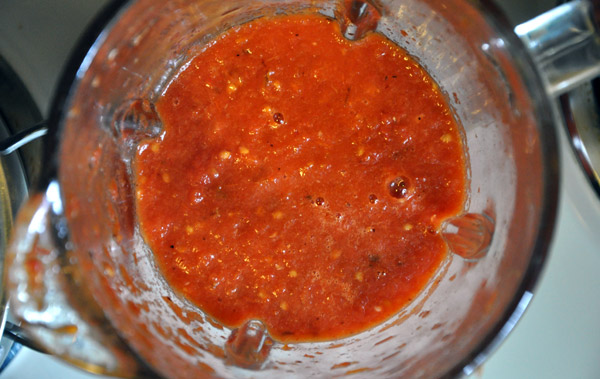
Finally, you can simply blend the tomatoes. Cut and simmer the tomatoes for a few minutes before removing them from the water and placing in the blender. Fill the blender about ¾ of the way up and blend. Make sure that you have a good lid to prevent getting scalded from the hot juices. Blending is fast and easy, but it will not remove the skins or seeds. Keep blending until the sauce reaches the smoothest consistency as possible.
Preparing the Recipe
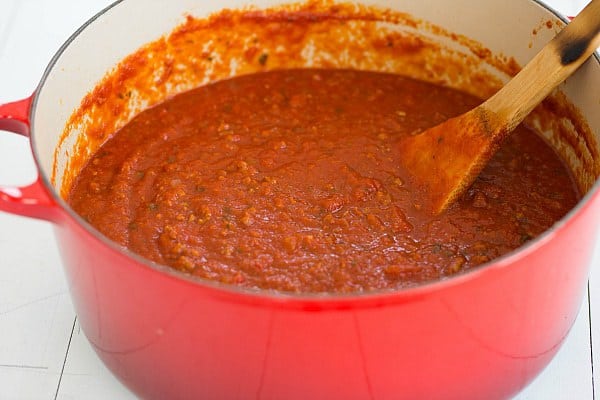
You can dice the vegetables and brown the meat while you are waiting for the tomatoes to cook. Drain as much fat from the meat as possible. Once the sauce is finished, add all of the ingredients to a large pot and simmer for a few minutes. You don’t need to fully cook the sauce at this stage. Remember that the sauce will continue to cook during the canning process as well as when you heat up the finished product later.
Prepare your pressure canner, jars and seals. Warm the jars before adding the sauce, and make sure the sauce is also warm when filling them up. Fill each jar until there is an inch of headspace and attach the lid assemblies. Expect to process the sauce in pint jars for around an hour or more, depending on altitude. Add another 10 minutes for quart jars.
Remove the jars from the canner once pressure has equalize and allow to cool at room temperature overnight. Check the quality of the seals and condition of the jars before labeling and storing them in a cool and dark place.
Vegetable-Only Sauce

The main difference between meat and vegetable-only sauce is in the processing times. Meat products take considerably longer. You should also cook the sauce for a longer period of time in order to unlock the flavors and allow some of the moisture to evaporate. This will produce a heartier finished product. Expect to cook your sauce for about ¾ of the time that you would if you were making it for dinner.
Follow the same guidelines above for preparing the tomatoes, vegetables and pressure cooker. Process pint jars for at least 20 minutes (adjusting for altitude) and quarts for 30 minutes.
Feel free to modify the recipe listed above to suit your tastes and preferences, but make sure that you process the sauce properly. Remember not to start the timer until the pressure has built up inside the canner, and always re-process any jars that are defective. Better yet, consume the sauce instead of storing it in order to avoid having a soggy and over-cooked finished product later. In any case, this process allows you to have meat or meat-less sauces that can last for up to a year in some circumstances.
Try it for yourself, and see how some good pasta sauce makes a delicious and nutritious addition to your food stockpile. Remember that you can also enjoy the nutritional benefits of the sauce even if you don’t have pasta on hand. This is a beneficial option to remember if you don’t want to tap into limited water and fuel supplies to make pasta during a long-term survival situation.


